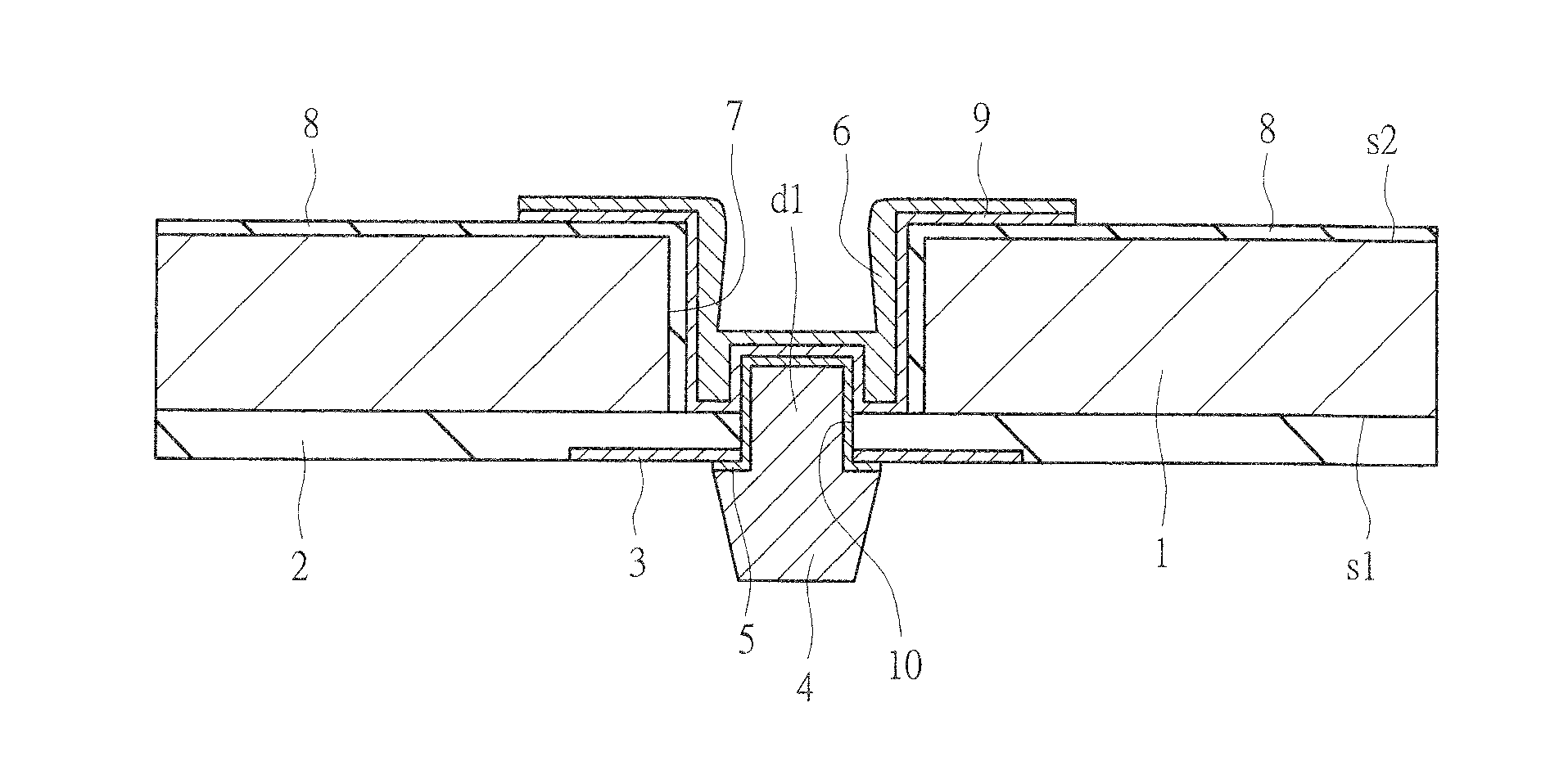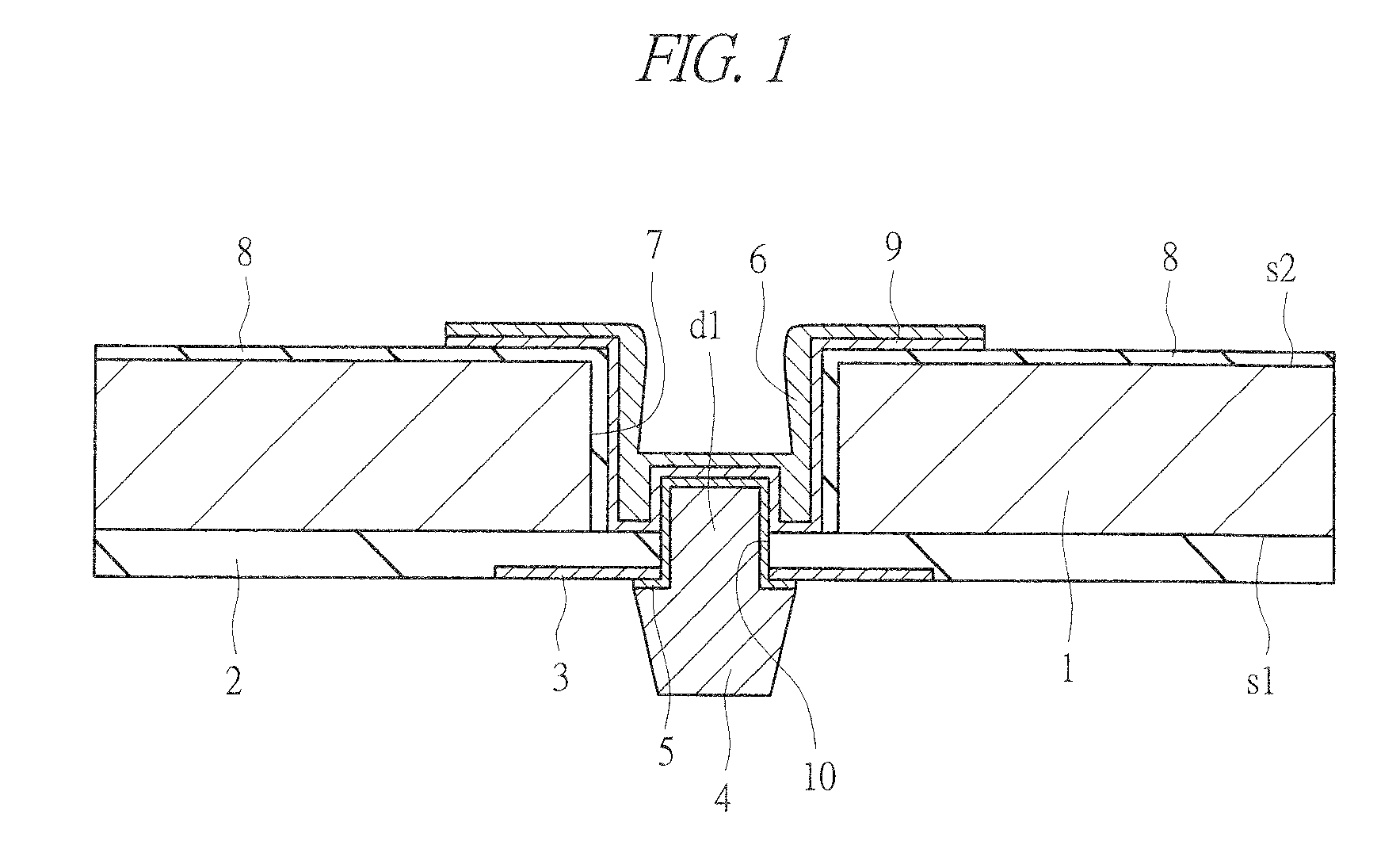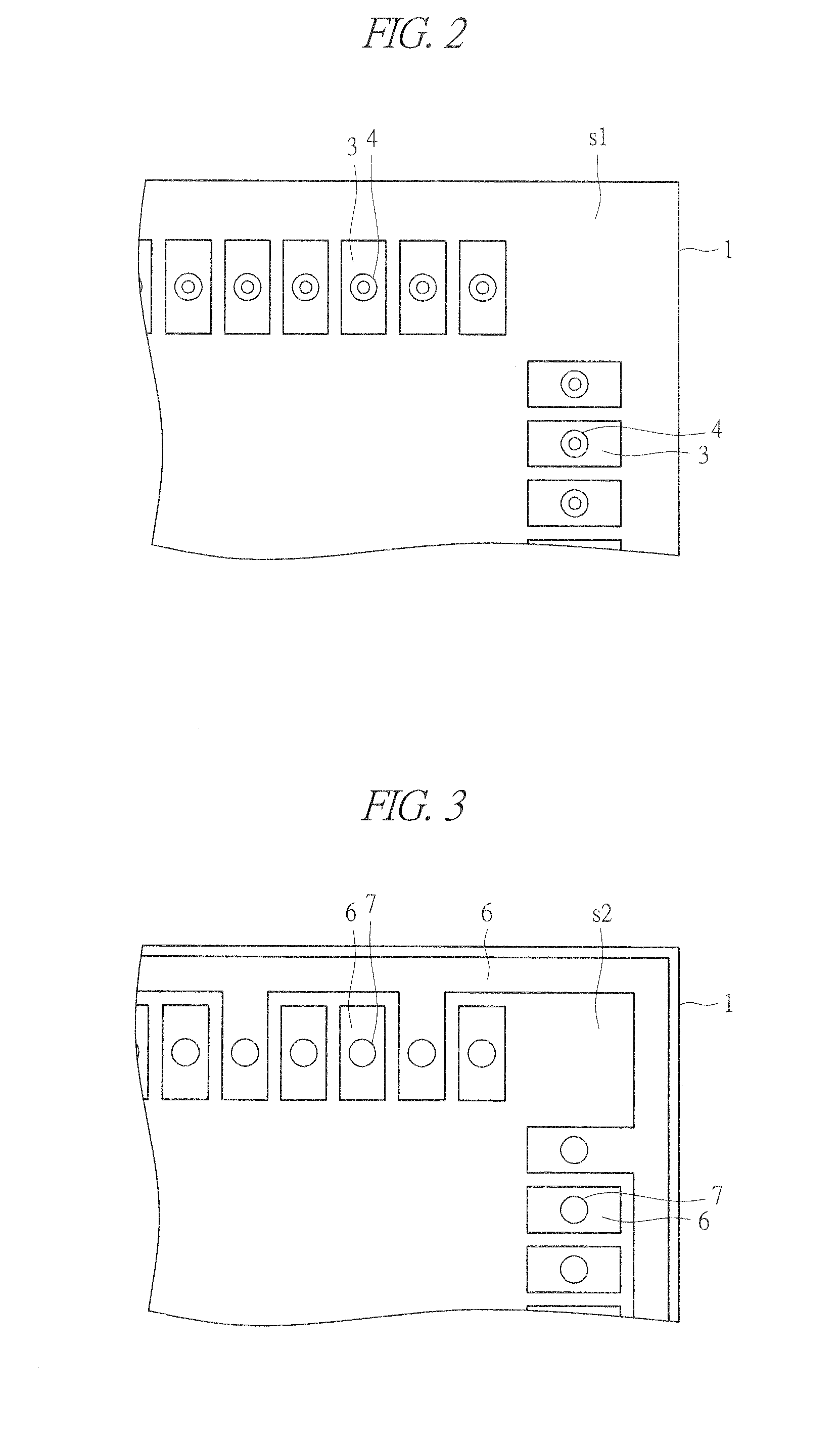Semiconductor device and method of manufacturing the same
a semiconductor device and semiconductor technology, applied in semiconductor devices, semiconductor/solid-state device details, electrical apparatus, etc., can solve the problems of increasing resistance and inductance, not suitable for high-speed operations, and increasing mounting area of semiconductor devices, so as to improve the performance of semiconductor devices, the effect of reducing the productivity
- Summary
- Abstract
- Description
- Claims
- Application Information
AI Technical Summary
Benefits of technology
Problems solved by technology
Method used
Image
Examples
first embodiment
[0074]A configuration of a semiconductor device of a first embodiment will be described with reference to FIGS. 1 to 3. FIG. 1 illustrates a cross-sectional view of a main part of a silicon substrate (semiconductor substrate) 1 which the semiconductor device of the first embodiment has. FIG. 2 illustrates a plan view of a main part of a main surface (first main surface) s1-side of the silicon substrate 1. FIG. 3 illustrates a plan view of a main part of a back surface (second main surface) s2-side of the silicon substrate 1. The main surface s1 and the back surface s2 of the silicon substrate 1 are positioned on the sides opposite to each other in a thickness direction of the silicon substrate 1.
[0075]A plurality of semiconductor elements (elements) such as field effect transistors (FETs), capacitors, and non-volatile memory cells are formed (not illustrated) on the main surface s1 of the silicon substrate 1. Further, an interlayer insulating film 2 is formed on the main surface s1 ...
second embodiment
[0109]In a second embodiment, a structure which exerts different effects by changing the shape of the through-electrode in the semiconductor device of the above-described first embodiment will be described. A semiconductor device of the second embodiment has a similar configuration and similar effects as the semiconductor device of the above-described first embodiment except for the configuration described below.
[0110]A first structure will be described with reference to FIG. 20. The through-electrode of the semiconductor device of the second embodiment has a structure similar to that of the through-electrode of the semiconductor device of the above-described first embodiment. Specifically, the bump electrode 4 formed in the main surface s1-side of the silicon substrate 1 has the protruding portion d1, and the protruding portion d1 penetrates through the pad 3, also penetrates through the interlayer insulating film 2, and protrudes to the inside of the back-surface-electrode hole po...
third embodiment
[0151]A semiconductor device of a third embodiment will be described with reference to FIG. 45. The semiconductor device of the third embodiment has a configuration in which a plurality of semiconductor chips having through-electrodes like those of the above-described first and second embodiments are stacked. Herein, the semiconductor chips are stacked in the manner as described with reference to above-described FIG. 20.
[0152]FIG. 45 illustrates the semiconductor device including the stacked plurality of chips (first chip C1, second chip C2, and third chip C3) having the through-electrodes of the third embodiment. The chips are mutually connected by physical caulking by injecting and pressure-welding the bump electrode 4 formed on an upper-level chip (for example, the second chip C2) into and with the hollow back-surface-electrode hole portions 7 formed in a lower-level chip (for example, the first chip C1). The bump electrodes 4 of the chip of the lowermost layer (in this case, the...
PUM
 Login to View More
Login to View More Abstract
Description
Claims
Application Information
 Login to View More
Login to View More - R&D
- Intellectual Property
- Life Sciences
- Materials
- Tech Scout
- Unparalleled Data Quality
- Higher Quality Content
- 60% Fewer Hallucinations
Browse by: Latest US Patents, China's latest patents, Technical Efficacy Thesaurus, Application Domain, Technology Topic, Popular Technical Reports.
© 2025 PatSnap. All rights reserved.Legal|Privacy policy|Modern Slavery Act Transparency Statement|Sitemap|About US| Contact US: help@patsnap.com



